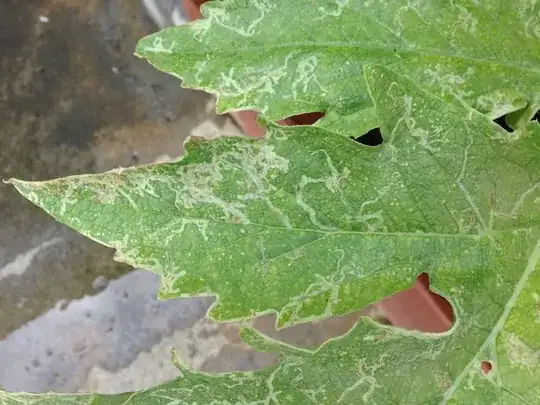I have an artichoke planted in a raised bed in southern California, USA.
The new leaves at the core look healthy and happy, but the biggest, oldest, outermost leaves develop white squiggly lines. At first it's just a few, but eventually the leaf becomes covered with them, dies, dries out, and falls down to lay in the dirt.
The lines are not deposits on the surface of the leaf. They appear to be dead spots within the leaf, visible from both sides. It looks almost like something has been crawling on or inside the leaves and scraping them, but I never find any visible pests on the plant.
What is causing these lines and what can I do about it?
